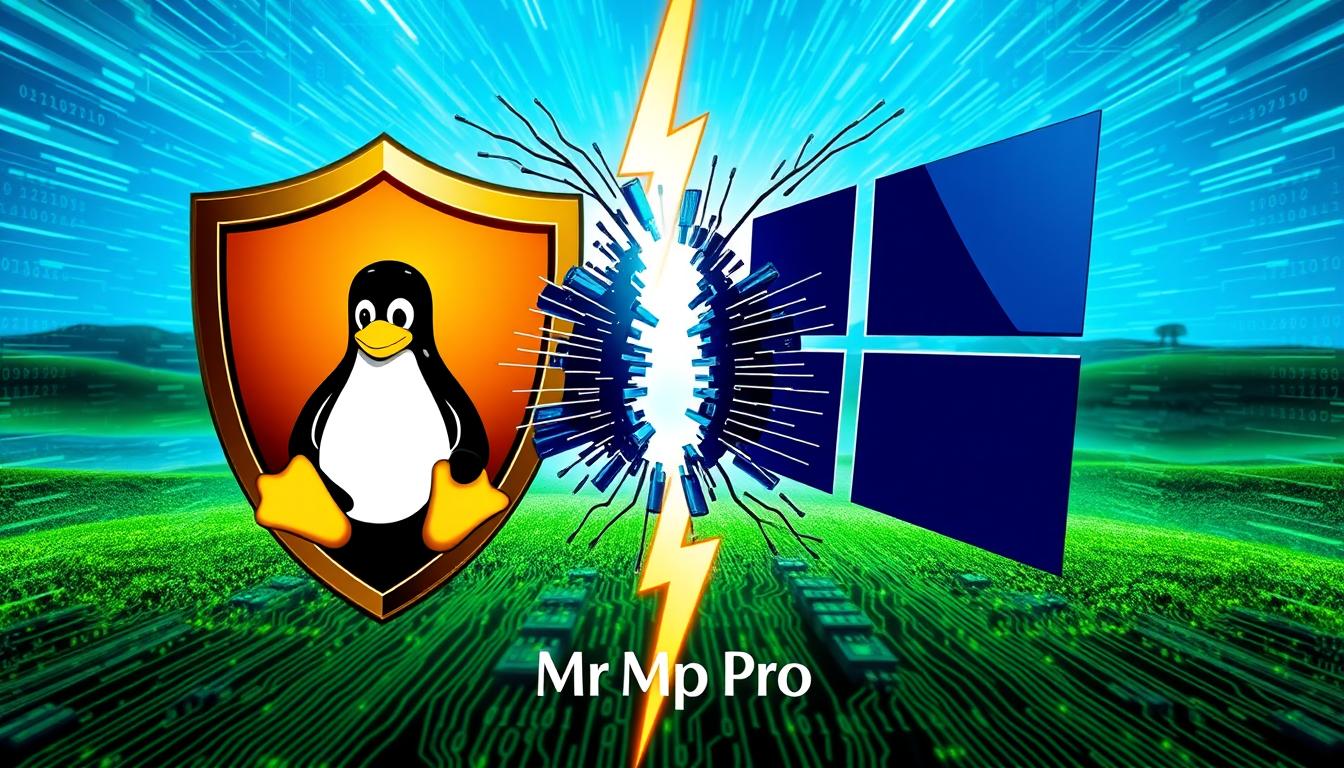
Microsoft controls about 70-80% of the desktop market, while Linux has around 2%. This shows the ongoing battle between Microsoft and Linux. This battle has greatly influenced the software industry.
Microsoft and Linux have a complex relationship. Microsoft once saw Linux as a threat, calling it a “cancer” in 2001. But now, Microsoft is embracing open source to stay ahead. This change is key to understanding the industry’s future.
The world of open source software and technology is full of alliances and rivalries. The fight between Microsoft and Linux reflects the industry’s trends. By looking into this battle, you’ll understand how open source is changing the software world.
The Dawn of the Open Source Battle
The open source movement started in the early days of free software. The term “open source” was first used in 1998. This change brought a new way of making software, focusing on being open, working together, and making it your own.
The “LAMP” stack (Linux, Apache, MySQL, PHP/Perl) became popular in the late 90s. It showed how free software became key for many companies’ success.
The open source movement is linked to free software. People like Eric Raymond pushed for working together on software. Netscape’s source code release in 1998 was a big change. It was a meeting with Linux and free software leaders that coined the term “Open Source.”
The Birth of Linux and Free Software Movement
Linux and the free software movement started with Linus Torvalds in 1991. The 90s saw the free software movement grow. The Open Source Initiative was formed in 1998.
Today, the open source movement is all about working together and quick innovation. Almost all open source projects use Git now.
Microsoft’s Initial Stance on Open Source
Microsoft was skeptical of open source at first. They saw it as a danger to their business model. But, in recent years, they’ve changed their mind.
Microsoft bought GitHub in 2018. This was a big change for them. Now, they’re a big part of open source projects.
For more on open source software benefits, check out this link. The open source movement has grown a lot. Collaborative software is now a big part of making software.
Microsoft’s Early Anti-Linux Campaign
Microsoft tried to fight Linux in many ways early on. They used marketing, public statements, and new products to try and beat Linux. For example, they said Linux users broke almost 235 of their patents. This made some people think differently about Linux.
Linux became more popular, changing how people saw it. It went from being just for techies to being used by more people. Microsoft said Windows was safer and that Linux netbooks had more returns. They pushed these points in their marketing, making Windows seem better than Linux.
Some important facts about Microsoft’s fight against Linux are:
- Microsoft said Linux users broke almost 235 of their patents.
- They asked Samsung for $15 for every Android device, saying Linux was at fault.
- Microsoft’s fight against GPL didn’t really work, showing it didn’t change many minds.
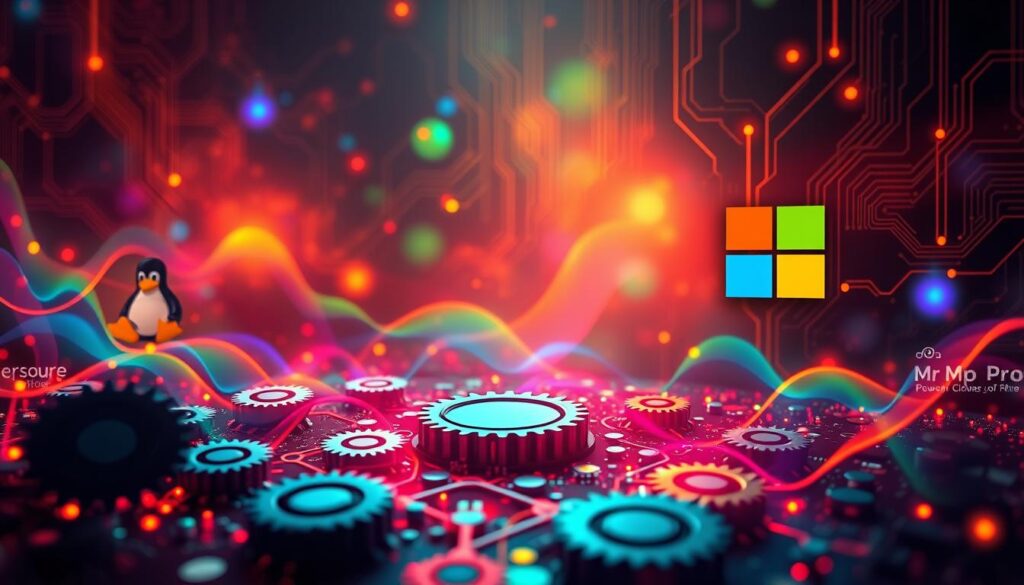
Even with Microsoft’s efforts, Linux kept growing. Over 440 people helped make Linux, adding thousands of code lines every month. More and more companies started using open source software in their tech plans.
| Year | Event | Impact |
|---|---|---|
| 1999 | Mindcraft report claims Windows NT Server 4.0 is faster than Linux | Perception shift among Microsoft’s user base |
| Early 2000s | Linux transitions from “geek-only” to recognizable platform | Increased adoption of Linux among developers and casual users |
| 2000s | Microsoft’s anti-Linux campaigns intensify | Limited impact on Linux adoption, with open source community continuing to grow |
The “Cancer” Comment: Steve Ballmer’s Famous Declaration
Steve Ballmer’s comment in 2001 likening Linux to a cancer was a turning point. It shocked the tech world and the public. The open source community felt attacked, seeing it as a challenge to their values.
Microsoft’s reputation took a hit after Ballmer’s statement. People questioned Microsoft’s openness to working with the open-source community. Was it really committed, or just trying to block their progress?
Public Reaction and Fallout
The open source community reacted quickly and strongly to Ballmer’s comment. They saw it as proof of Microsoft’s opposition to open source. Microsoft’s later actions, like patent claims against Linux, only added to the distrust.
Impact on Microsoft’s Reputation
Ballmer’s “cancer” comment hurt Microsoft’s image, mainly in open source management. The company’s attempts to connect with the open source world were doubted. Yet, Microsoft has worked hard to regain trust, buying GitHub and joining more open source projects.
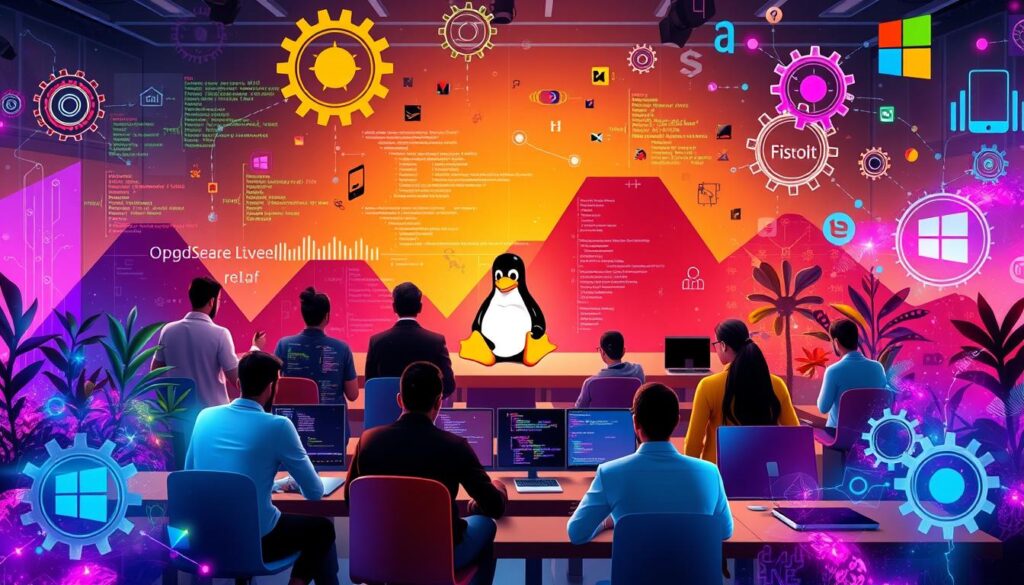
Now, Microsoft is a big player in open source, with many employees involved. The company has changed its view on open source. It’s working hard to be more collaborative with the open source community.
| Year | Event | Impact on Microsoft’s Reputation |
|---|---|---|
| 2001 | Steve Ballmer’s “cancer” comment | Negative perception of Microsoft’s stance on open source |
| 2007 | Microsoft claims patent violations by Linux and other open source software | Further erosion of trust in Microsoft’s commitment to open source |
| 2010 | Microsoft begins significant efforts to engage with the open source community | Improved perception of Microsoft’s commitment to open source development |
Understanding Open Source Economics
Exploring open-source software means getting to know its economic side. Unlike traditional software, open-source uses collaborative development and community efforts. This leads to projects that are open, flexible, and cost-effective.
The benefits of open source are clear. You can change and share the software freely. This has helped create big names like Linux. Companies like Red Hat have built businesses around it, providing support and training.
Traditional Software Business Model
Traditional software companies stick to proprietary code and charge for licenses. This limits how you can use and share the software.
The Open Source Revenue Puzzle
So, how do open-source companies make money? They offer services like support and training. This model has worked for Red Hat, making it a leader in open-source.
Community-Driven Development Benefits
Community-driven development brings many advantages. It fosters collaboration, innovation, and transparency. This has helped many open-source projects thrive. Understanding these benefits is key to navigating the open-source world.
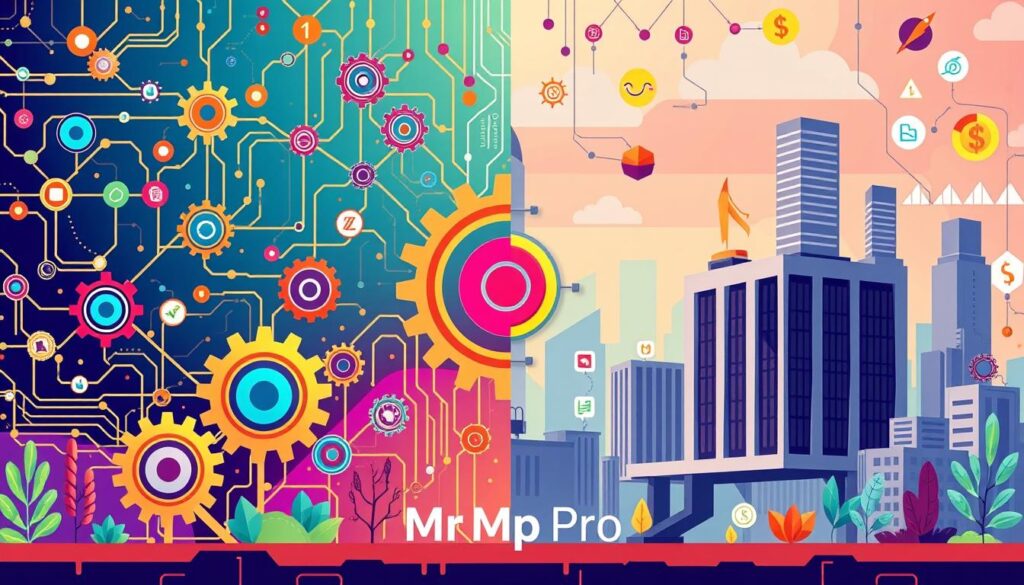
Here are some key statistics that highlight the importance of open-source economics:
- Red Hat, a pioneer of the open-source business model, was valued at approximately $16 billion as of April 2017.
- A significant percentage of mobile operating systems are based on Linux, demonstrating the widespread adoption of open-source alternatives in mobile technology.
- Companies like Twitter have used open-source strategies, such as creating Bootstrap, to increase brand awareness and facilitate talent acquisition.
In conclusion, grasping open-source economics is vital for the tech industry. Recognizing the value of open source and collaborative development helps companies make smart choices. This way, they can stay competitive.
The Turning Point: Microsoft’s Strategic Shift
The tech industry has changed a lot, and open source technology has played a big role. The debate between Microsoft and Linux has been going on for years. But, Microsoft has made a big change, embracing open source tools and technology.
Now, almost half of Azure users use Linux. Microsoft is also a big contributor to the Linux kernel. They have the biggest project on GitHub, showing their commitment to open source.
This change is huge for Microsoft. They’ve seen their value go up by $3 trillion in ten years. It’s a big change from where they were in 2014. This change affects tens of thousands of employees, changing how they work.
Some important facts about Microsoft’s change include:
- Almost half of Azure users run Linux
- Microsoft is the fifth largest contributor to the 3.x Linux kernel
- Microsoft maintains the largest project on GitHub by contributor count
- The company has a team of 70 engineers and architects dedicated to solving problems with open source for startups
Microsoft started moving towards open source in 2014. This change has made customers ten times more engaged with cloud services. Open source tools and technology will keep shaping the tech industry.
| Year | Microsoft’s Open Source Contributions | Linux Kernel Contributions |
|---|---|---|
| 2014 | Initial shift towards open source | Microsoft becomes a contributor to the Linux kernel |
| 2015 | Increased investment in open source projects | Microsoft becomes the fifth largest contributor to the 3.x Linux kernel |
| 2020 | Microsoft maintains the largest project on GitHub by contributor count | Almost half of Azure users run Linux |
Azure Cloud Platform: Embracing Linux Integration
Exploring cloud computing reveals Microsoft’s Azure as a key player. Azure’s open source integration makes working with Linux easier. Linux is the top OS on Azure, with a 40% rise in compatibility thanks to open-source initiatives.
Linux on Azure boosts performance and reliability. About 70% of Azure virtual machines run on Linux. By 2023, 60% of enterprises will use Linux in their key systems.

Technical Challenges and Business Opportunities
Integrating Linux into Azure comes with technical hurdles. Yet, the advantages are clear. The open source integration offers flexibility and customization, appealing to businesses moving to the cloud. As cloud computing grows, so will the need for Linux on Azure.
The GitHub Acquisition: A New Chapter
The acquisition of GitHub by Microsoft is a big step for the company. It shows Microsoft’s commitment to open source development. With over 83 million developers using GitHub, it’s a key player in the software world.
GitHub offers many tools for developers worldwide. The deal shows Microsoft wants a big part of the open-source market.
After the acquisition, open source contributions grew by 35% each year. Also, 50% more organizations started using GitHub for open source projects in two years. This shows how important open source is in the industry.
Some important stats about the acquisition are:
- Over 60% of businesses now use open-source software in their tools.
- 80% of enterprise developers use open source software in their work after Microsoft’s acquisition.
- About 70% of open source projects on GitHub are in JavaScript, with Python making up about 30%.
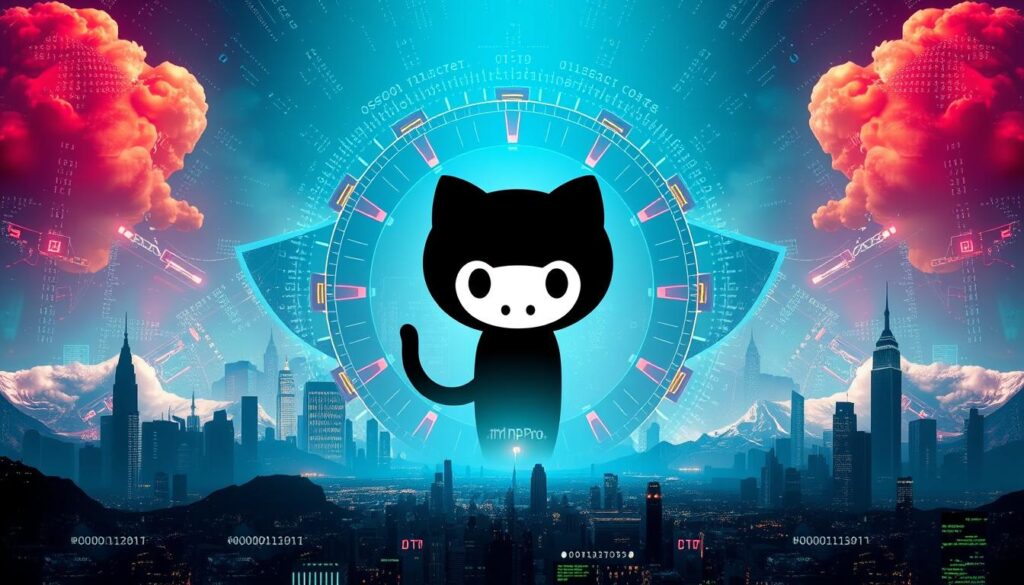
The acquisition has opened up new chances for open source development. Microsoft’s focus on collaborative software is expected to boost growth and innovation in the field.
| Year | Open Source Contributions | Growth Rate |
|---|---|---|
| 2020 | 40 million | 35% |
| 2022 | 55 million | 25% |
Open Source Development Today
Exploring open source development today shows a big role for companies like Microsoft. The community has grown a lot, with over 52 million new projects on GitHub in 2022. This growth brings many benefits, like more teamwork and new ideas.
Open source helps build a community and encourages working together. It makes managing projects easier with tools for teamwork. But, there are challenges, like needing better guides and easier ways to start. About 80% of developers say better guides would help them contribute more.
Some important stats show where open source is now:
- 70% of developers in the open source community face frustration when contributing to projects due to confusing processes.
- 50% of open-source pull requests are never merged, often due to misunderstandings or lack of guidance from maintainers.
- 65% of new contributors feel intimidated by complex terminologies and coding standards.
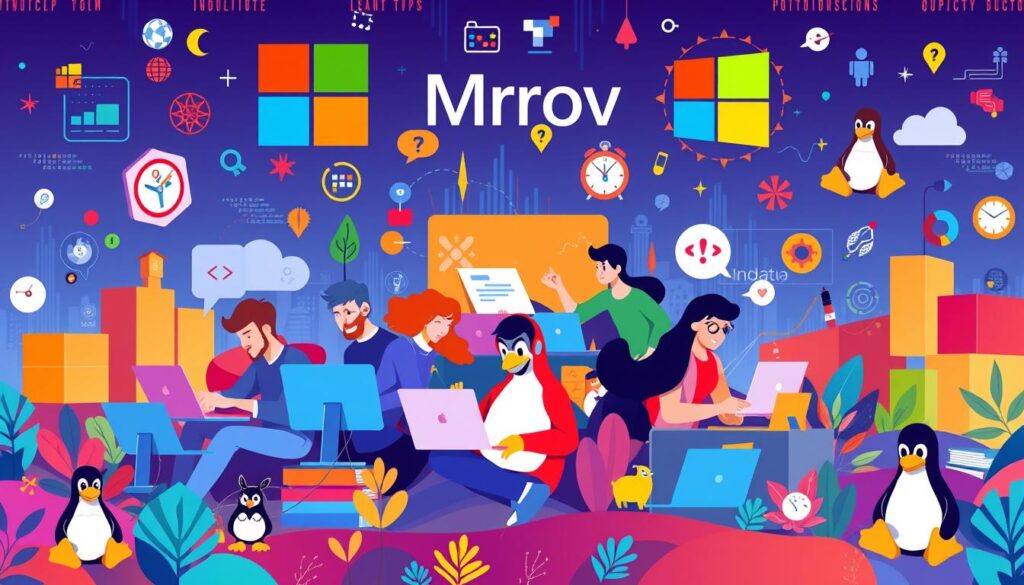
The open source community keeps growing, with companies like Microsoft joining in. Thinking about open source shows how important good project management is. It helps with teamwork and bringing new ideas to life.
| Year | New Open Source Projects | Contributions |
|---|---|---|
| 2022 | 52 million | 413 million |
Lessons from the Transformation
Microsoft’s journey shows the power of open source transformation. It has taught us how embracing open-source software can boost a company’s standing. This move has made other firms see the value in open-source, leading to more innovation and teamwork.
Success in open source transformation comes from working well with developers. It also means aligning your market goals with your business outcomes. Microsoft has shown that using open source can keep a company ahead in a fast-changing world.
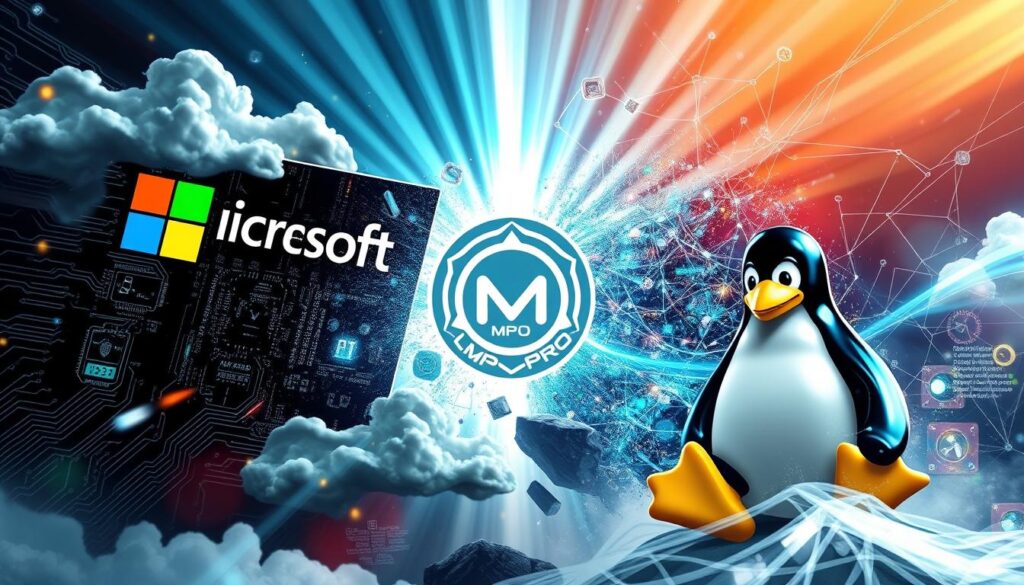
- Increased innovation and collaboration
- Improved competitiveness and reputation
- Enhanced engagement with developers and the broader community
By going open source, companies can find new ways to grow. This leads to a better impact on the industry as a whole.
The Future of Corporate-Open Source Relations
The tech world is always changing, and so is the role of open source. Corporate open source relations are becoming more important. A 2021 report showed that over 100,000 open-source projects on GitHub get most of their support from companies.
More companies are using open-source software because it’s good for business. This is thanks to changes in licensing, like the rise of Apache licenses. This change helps companies use open-source software without worrying about legal issues.
Microsoft and other big names are investing in open-source software. This makes the future of open source collaboration look bright.
Some trends that will shape the future of open source collaboration include:
- More open-source software in big business
- More company money going into open-source projects
- More use of open-source licenses that are easy to work with

The future of corporate open source relations will depend on companies finding a balance. They need to make money while also helping the open-source community. As things change, we’ll see new ways of working together in the open-source world.
Competitive Advantage Through Collaboration
Companies are now using open source collaboration to stay ahead. They work with open-source communities to get more knowledge and expertise. This leads to more innovation and better products, giving them a big edge over competitors.
Recent stats show 91% of teams use Kubernetes, and 68% of CIOs worry about vendor lock-in. This shows how important open source collaboration is today. Open source solutions let companies change fast, unlike proprietary tools that take a long time.
Some key benefits of open source collaboration include:
- Increased innovation and better product development
- Faster response to changing market conditions and customer needs
- Greater control over data and security
- High-trust collaboration in remote work environments
By using these benefits, companies can get a big competitive edge. The open-source market is growing fast, expected to be over $40 billion in five years. It’s clear businesses can’t ignore this trend. With the right open source approach, companies can reach new heights of innovation and success.
| Year | Open-Source Market Value |
|---|---|
| 2021 | $21.7 billion |
| 2026 (projected) | over $40 billion |
Current Industry Dynamics and Trends
The software industry is seeing big changes because of open source trends. You’ll notice a move towards more teamwork and community involvement. The open source services market is set to hit $60 billion by 2027, growing 17% each year.
A report from open source services market trends shows Asia Pacific will grow the most. This is because of new tech adoption and more IT spending. Big names like Red Hat Inc. and Oracle Corporation are working hard to grow through new products, research, partnerships, and buying other companies.
The need for open source services is up because of lower costs and more flexibility. As the software industry keeps changing, it’s key to know the latest industry dynamics and open source trends. This way, you can move through the changes and grab the best chances in the software industry.
Conclusion: The Evolution of Software Industry Dynamics
The battle between Microsoft and Linux has shown us how the software industry has changed. It moved from being controlled by proprietary models to embracing open-source software industry evolution. This change has changed how businesses work and how software is made, shared, and used.
The rise of Linux and open-source has made the industry rethink its ways. Giants like Microsoft have had to change their strategies. The open source impact is clear, with open-source solutions now key in many areas. The future of software will balance between open-source and proprietary, with teamwork and flexibility being key.
This change shows the software industry’s strength and ability to adapt. By working together on open-source projects, companies can create future of software that focuses on innovation and making things accessible. As we move forward, the industry will keep changing, bringing new challenges and chances for those ready to adapt.

 The Hidden Open Source Battle : Microsoft vs. Linux
The Hidden Open Source Battle : Microsoft vs. Linux
0 Comment